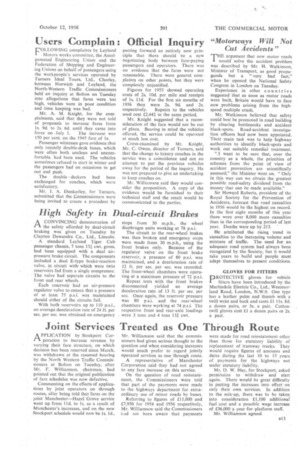"Motorways Will Not Cut Accidents"
Page 47

If you've noticed an error in this article please click here to report it so we can fix it.
THE argument that new motor roads would solve the accident problem was described by Mr. H. Watkinson, Minister of Transport, as good propaganda but a "very bad fact," when he opened the National Safety Congress in London on Tuesday.
Experience in other countries suggested that as soon as motor roads were built, Britain would have to face new problems arising from the highspeed multiple crash.
Mr. Watkinson believed that safety could best be promoted in road building by clearing bottlenecks and accident black-spots. Road-accident investigation officers had now been appointed. Their main task was to help highway authorities to identify black-spots and work out suitable remedial treatment.
",1 want to be sure that, over the country as a whole, the priorities of schemes from the point of view of accident prevention are scientifically assessed," the Minister went on. "Only in this way can we obtain the greatest possible road-safety dividend from the money that can be made available."
Sir Howard Roberts, president of the Royal Society for the Prevention of Accidents, forecast that road casualties in 1956 would be the highest on record. In the first eight months of this year there were over 8,000 more casualties than in the corresponding period of last year. Deaths were up by 213.
He attributed the rising trend in casualties to the increasing volume and mixture of traffic. The need for an adequate road system had always been recognized by the Society, but it would take years to build and people must adapt themselves to present conditions.
GLOVES FOR FITTERS
PROTECTIVE gloves for vehicle fitters have been introduced by the Martindale Electric Co., Ltd., Westmorland Road, London, N.W.9. One type has a leather palm and thumb with a twill wrist and back and costs £1 1 ls. 8d. a dozen pairs, or 3s. a pair. Cottontwill gloves cost £ 1 a dozen pairs OF 2s, a pair.




















































































































